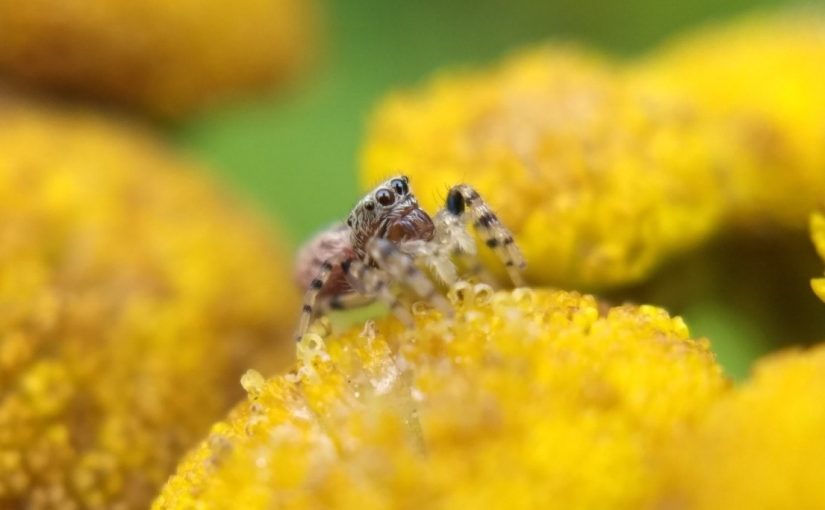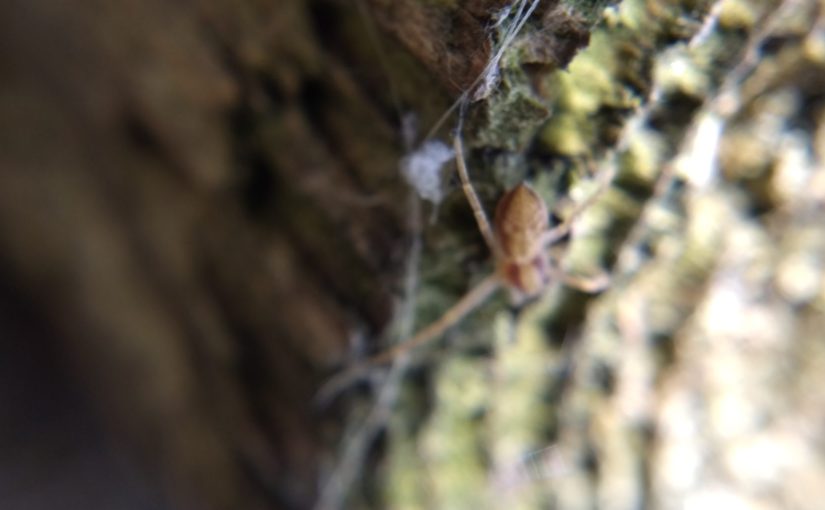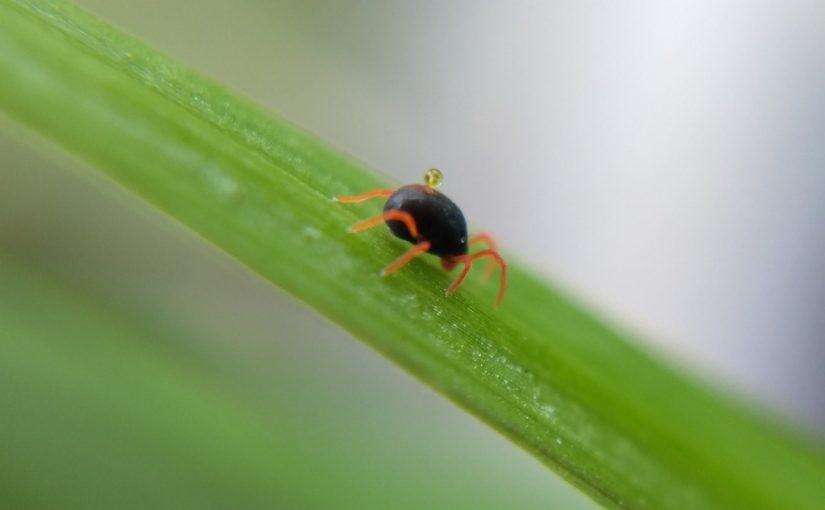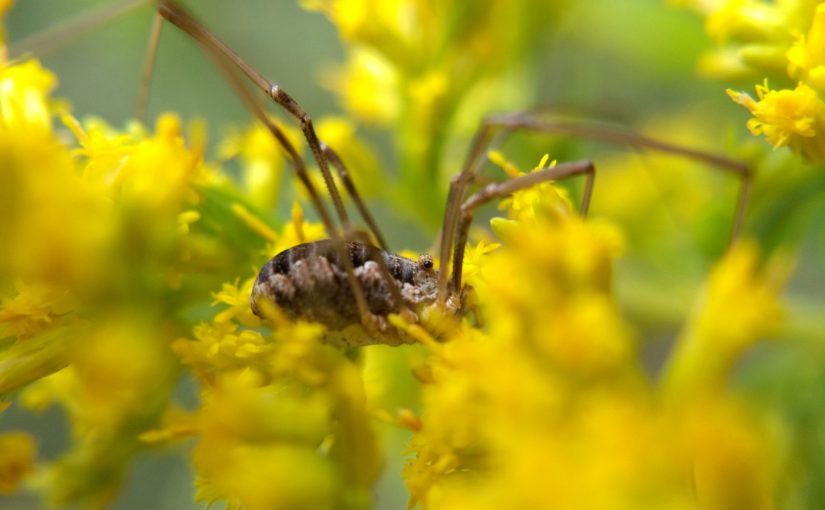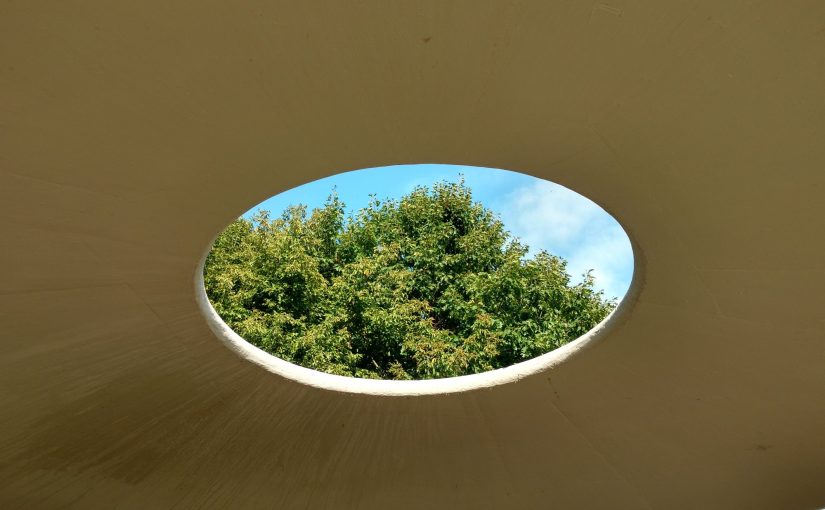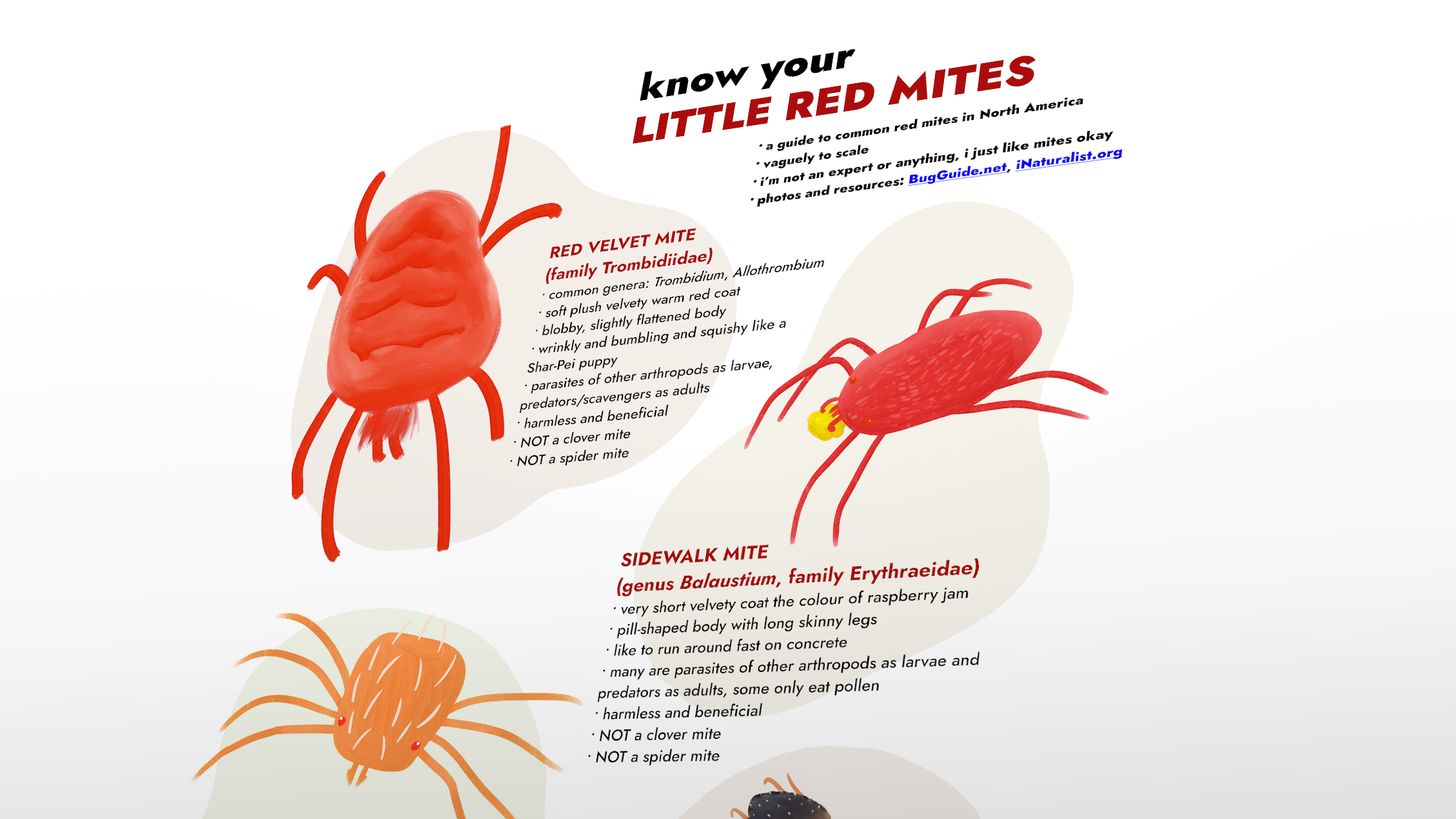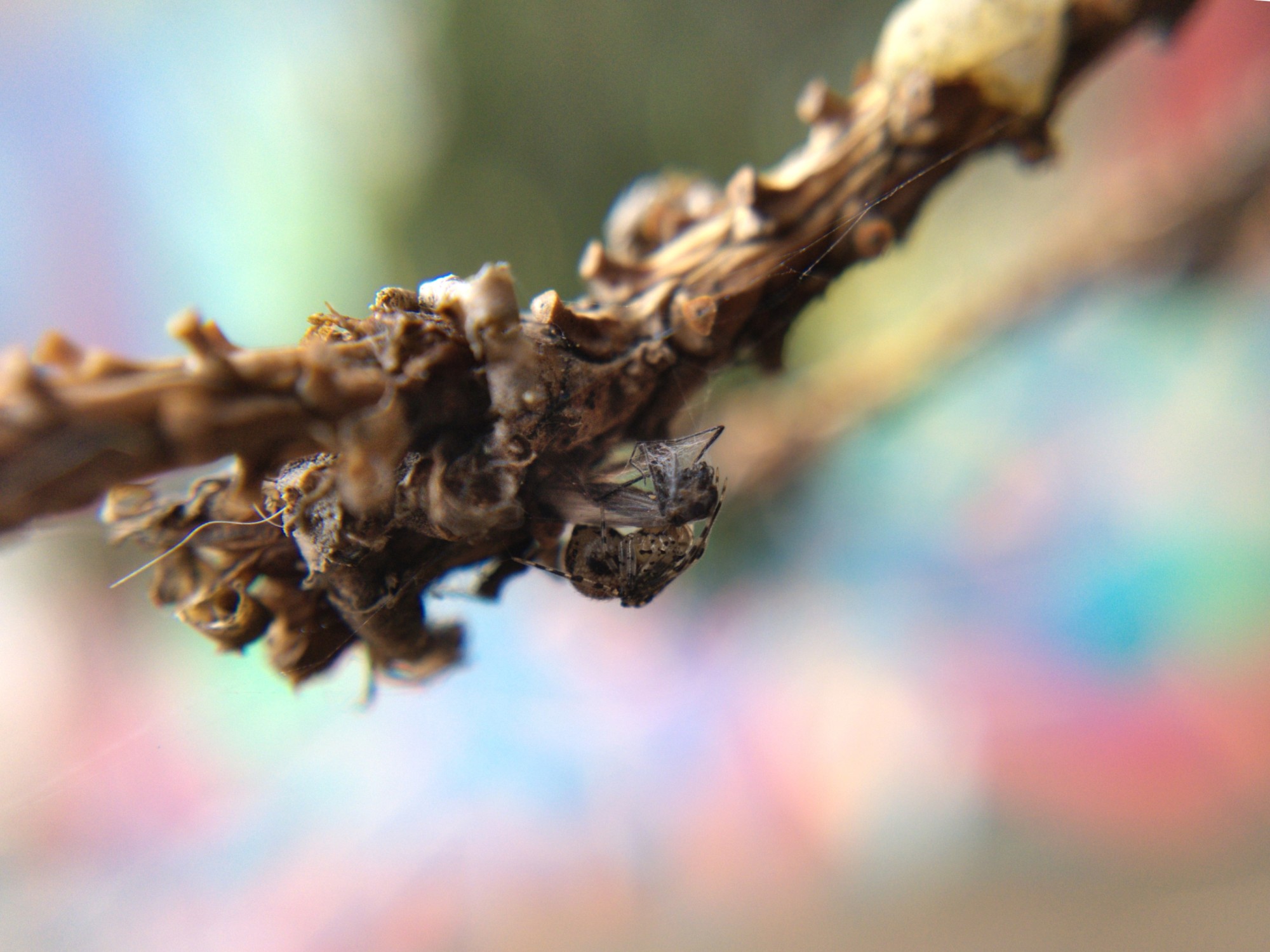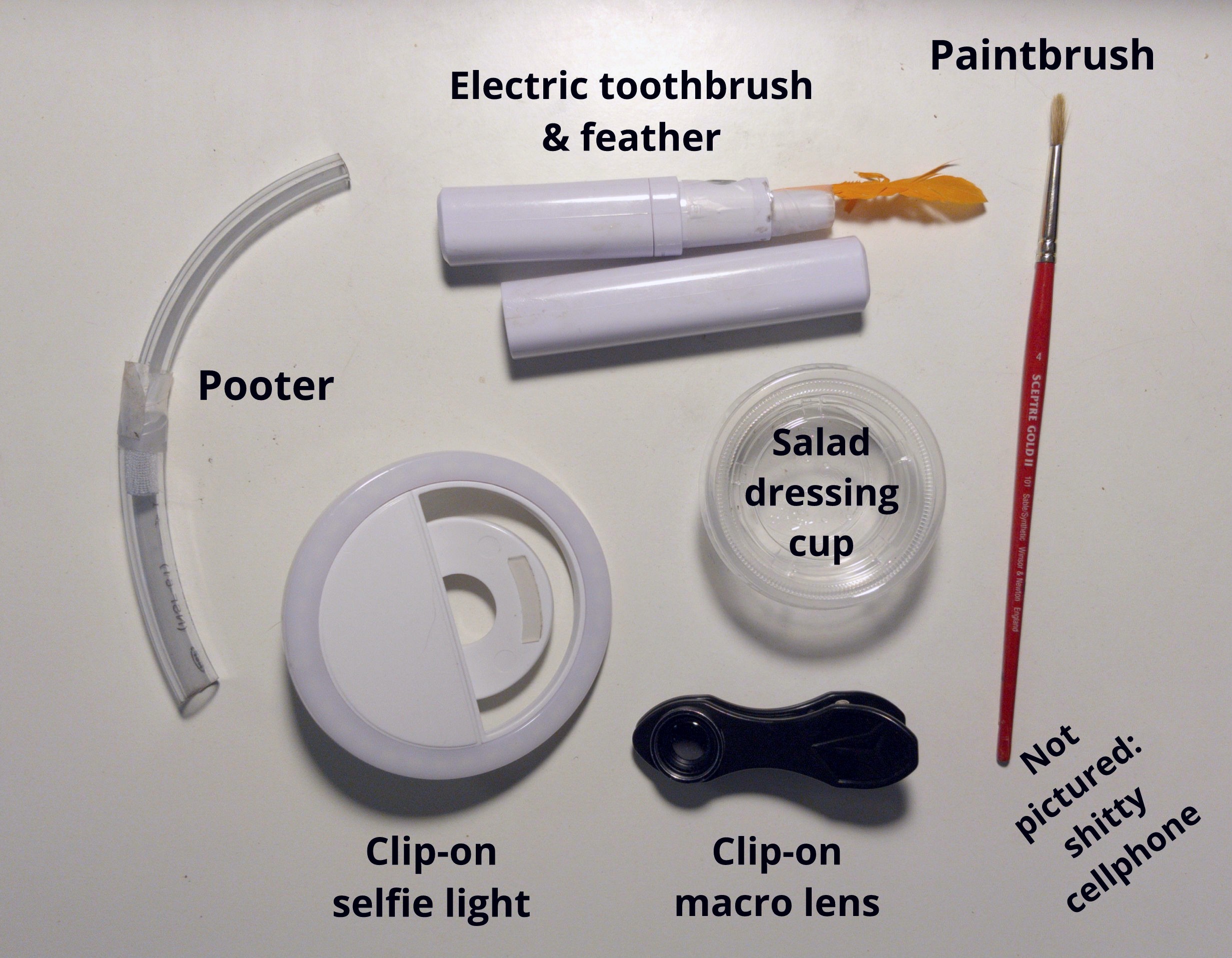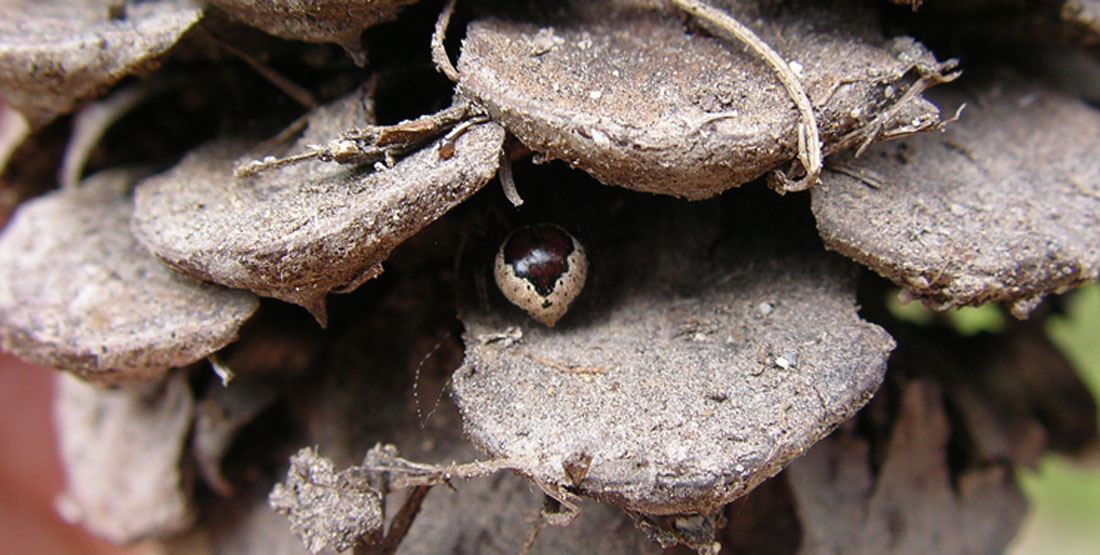Back in May I recapped the arachnid highlights of the year to date. Since then I’ve found some species I had no idea occurred here, and seen some things in real life that I’d only ever read about! Here’s my personal top 10 arachnid observations from the rest of 2024.
Category: nature
How To Take Good Up-Close Phone Photos of Bugs
So, I love identifying bugs1 for people online. It’s like solving tiny little mysteries. But often it’s hard for people to get a photo of the bug to begin with, because it’s just so small or fast-moving and all they have is a phone. This post isn’t about getting into phone macro photography; this is a quick guide for taking a basic photo that’s good enough for ID. Continue reading How To Take Good Up-Close Phone Photos of Bugs
I Can Put My Leg Back On You Can’t: How Spiders Regrow Limbs
The reference, for those of you lucky enough not to recognize it.
Recently I found a tiny four-legged running crab spider (family Philodromidae) in Trinity-Bellwoods and brought it home to keep temporarily until it grew its legs back. It was so small that I could keep it in a 45 mL plastic cup with a tiny chip of bark. I fed it sugar syrup on the end of a Q-tip, and then (as it was too small and terrified for the flightless fruit flies I raise for Sabella, my pet black widow) I made it a (disgusting) fruit fly-and-syrup mush to drink. It soon molted and grew back three legs, and was then big enough to catch fruit flies. I think it grew back the last leg its next molt, but perhaps dropped it again when it nearly escaped one night as I tried to feed it—a sign, to me, that it was time to release it. I made sure it ate again, then set it free at the spot in the park that I found it. It immediately caught a small green plant bug and raced off, lightning-fast and good as new.
I chronicled the whole thing on Mastodon, and received many replies from people who had no idea spiders could regrow legs! So here is a proper post about the phenomenon. Continue reading I Can Put My Leg Back On You Can’t: How Spiders Regrow Limbs
Recent arachnid lifers & rarities
It recently occurred to me that I first got into spiders around 2013 or 2014, which means that, unbelievably, I have been spidering for ten years. I mostly go to the same sites and recognize most of the spiders and mites I see, so I have gotten more interested in observing their behaviour rather than trying to identify them. But every now and then I do come across some that are totally new to me, or ones that I only see rarely. Here’s some of the “lifers” and rarities I’ve come across this year so far, with links to the corresponding iNaturalist observations.
Arachtober 2022
I don’t always manage it, but this year I managed to post arachnids every day of #Arachtober! For those who don’t want to page through the thread, here’s an album of them all in one place. Continue reading Arachtober 2022
Field journal: Spiders of the Oculus
Yesterday afternoon, after the rain stopped, I made a quick trip to the Oculus—the long-abandoned space-age modernist pavilion near the foot of the Humber Trail. And within a minute’s walk along the trail in either direction, I found more spider diversity than I ever find in my usual sites! Continue reading Field journal: Spiders of the Oculus
Know Your Little Red Mites: A Guide
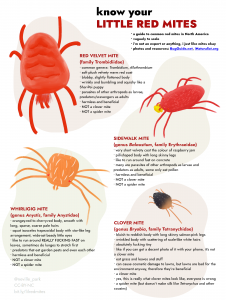
To the casual observer, many mites are just mysterious little red dots. Gardeners and farmers will be familiar with the spider mite family, Tetranychidae. These mites are plant-eaters, and many are major agricultural pests worldwide.
But there are so many other kinds of mites—more than you know. More than I know! More than even acarologists (mite scientists) know. They have described about 50,000 species, but they think there are probably at least a million in total.1 If you take a closer look at the little red dots running around, you can find many different kinds, occupying many different ecological niches, all unique and delightful to watch. Continue reading Know Your Little Red Mites: A Guide
Field journal: First spiders of spring in Trinity-Bellwoods
This winter I have tried to get into the habit of getting a coffee and a pastry at the White Squirrel and going for walks around Trinity-Bellwoods, just to get out of the house. There haven’t been bugs, but there are sometimes Fancy Birds: finches (house or purple, I’m not sure), woodpeckers, and once a Cooper’s hawk. Today it was quite nice and to my surprise there were flies and midges in the air, red velvet mites crawling in the soil, and the first spiders out and about! Continue reading Field journal: First spiders of spring in Trinity-Bellwoods
My spidering kit
You don’t need a DSLR, professional science equipment, or even a really expensive smartphone to get up close with spiders (or any other bugs). I’ve been using my cheap-ass smartphone and gear cobbled together from the dollar store for years. So, here’s what I’m using right now, as well as some recommendations for other stuff I’ve used in the past. Continue reading My spidering kit
Update: Pinecone Spiders
Summer spidering season is well underway, and I’m no longer turning over pinecones in search of spiders. But I just stumbled across this 2016 blog post by Rod Crawford (of Seattle, WA’s Burke Museum) about Laurel Ramseyer’s research! Since 2008 she’s been sampling fallen pinecones for spiders—apparently a niche unexplored till now. This turned up the first record of the jumping spider Pseudoeuophrys lanigera in North America and has also proved useful for tracking the range of the crab spider Ozyptila praticola.
In 2015, Ramseyer and Crawford wrote a paper summarizing their findings about the pinecone-dwelling spiders of Washington State. A lot of mesh-web weavers (family Dictynidae), ground spiders (Gnaphosidae), sheet-web weavers and dwarf spiders (Linyphiidae), and cobweb spiders (Theridiidae). A lot different from all the running crab spiders (Philodromus) in my lakeside pinecones. They also mention finding a lot of Euryopis, a spider I’ve failed to find at all in my area despite seeing their distinctive tufty egg sacs all the time. Maybe that’s where I should be looking.
Time to do some reading and up my pinecone game…
